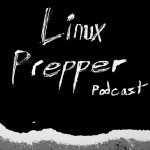
Cyberdeck Cyberwhat Selfhosted VPN networks and is Wireguard Hard
(00:00) Complete Shownotes at https://discuss.james.network (00:40) Sponsor Ameridroid referral link - US-based distributor of Odroid, Open Hardware and Home Automation Third Reality M1 Power Plug w/ Metering with Home Assistant support. LINUXPREPPER at checkout (02:01) State of the Podcast Albyhub as a selfhosted Bitcoin Lightning node. Locally hosts wallet and node for podcasting 2.0 donations + Nostr authentication. Thank you to those who have sent me donations and messages over the last couple days of it working. Send a direct lightning or Nostr donation here. Also, a thank you to the helpful Alby team. They have useful step-by-step guides. Only email them because their chat is covered in scammers. (02:44) Nostr decentralized social network. Iris.to webui client for Nostr (04:38) Events SeaGL or Seattle Gnu/Linux Conference at the University of Washington, Seattle, WA from 11/07 - 11/08. Full schedule released. No cost; all are welcome! My SeaGL presentation on 11/07 at 5pm. Will also be tabling to promote this show. Do stop by and say hello! (06:40) Self-hosted Tools Is Wireguard hard to use? Send your thoughts on an anonymous form. Adding authentication services onto Wireguard, specifically ones you can selfhost, and run on a cheap VPS: Racknerd Referral link, and select “Reveal Deals” for VPS annual subscriptions at $11. They are friendly bunch with a great reputation; Pangolin recommends them. Minimal VPS is all that is needed for these sorts of services, which are merely providing your authentication, as opposed to the actual wireguard traffic. Limited locations: Los Angeles, San Jose, Seattle Chicago, Dallas, New York, Ashburn Strasborg France Toronto, Canada Asia recommended to use DC-02 out of Los Angeles (07:47) Netbird - Connect your devices into a secure WireGuard®-based overlay network with SSO, MFA and granular access controls. You can try their hosted service or selfhost it, or whatever. Check out Pangolin - is a self-hosted tunneled reverse proxy server with identity and context aware access control, designed to easily expose and protect applications running anywhere. Pangolin acts as a central hub and connects isolated networks — even those behind restrictive firewalls — through encrypted tunnels, enabling easy access to remote services without opening ports or requiring a VPN. Combines traefik reverse proxy with Single Sign On and Wireguard. Meant to be selfhosted, but they do offer a hosted instance. Pin codes, temporary links, password links for exposing services as a “funnel”. Similar to cloudflare tunnels, where users cannot be bothered to sort things out and just want a service exposed. Headscale - The main objective of Headscale is to provide a non-proprietary implementation of the Tailscale protocol & control server for hobbyists and self-hosters. Acts as a replacement for the listening servers while allowing you to continue using your existing clients applications. Funnel functionality is currently considered in beta status. Does not include a web ui by default. Headscale-ui Full listing of various webui implementations for Headscale (14:15) Self-hosted Tools for when your Nextcloud server goes offline Syncthing - peer-to-peer file synchronization utility, designed to sync files between devices on a local network or between remote devices over the Internet. Note: Syncthing project does not directly support Apple Store or Google Play store for mobile. Syncthing-fork for Android. Available through Github or F-Droid Moebius Sync for iOS. Paid app. FileStash - webui designed to sit on top of your own sync service, Git, Google Drive, Database, S3, etc. Now supports arm devices! FileBrowser webui SFTPGo webui with multi-user and group support! Ways to support the show! Share with others! Help spread on social media. Donate on Paypal Donate Directly on Podcasting 2.0 Steam Key Giveaway drawing continues through 11/01 for reviewing the podcast on a platform of your choice: Apple Podcasts, Podcast Index, etc. Send me a link to enter the drawing. (20:01) You into Cyberdecks, bro? Cyberdore 2064 - 3D print yourself, with Pi Zero and Pi Pico. Looks like a blackberry / cell phone / palm pilot. What is a Cyberdeck - A cyberdeck is a portable computing device often associated with the cyberpunk genre, typically used by hackers or “Netrunners” to access and navigate virtual networks. Cyberdeck hat from Adafruit $9 and still requires a 3.5“ style touch or non-touch display for another $35. Angled to not be awkward on existing GPIO port in back. Cyberdeck Bonnet $8 and a $20 e-ink display or small OLED. Allows a couple pins additional GPIO access. Size of the Pi Zero / GPIO port. Pi 400 - $66. Another $20 for the accessories: mouse, power supply, SD Card. Awkward GPIO access requires expander, similar to Cyberdeck or Bonnet. No camera or Touchscreen cable connector. Improved thermals over Pi 4! 4gb ram is lame if using this with a web browser watching videos. Functions as a bluetooth keyboard, as do the other models! pi400kb - Use the Pi 400 or 500 as an actual HID USB Keyboard on your existing computer. Will likely require a USB-C splitter to allow power for the device while it acts as your USB keyboard Supports an attached mouse as well! Pi 500+ support still in development OrthoPi - Convert Pi 400 to mechanical yourself with a ~$20 gerber board that supports a rotary encoder. Doubles height of the keyboard. Repository offline and gerber not available in Wayback Machine. Send a link to the show if you find it! Pi 500 lowered heat produced. Regular keyboard. 8gb ram. $90. $30 for accessories. Pi 500 + w/ Gateron switches. RGB lighting. m.2 slot. Includes 256gb nvme at $200. $30 for accessories, probably worth it for 5 amp power. Is this actually comfortable to type on? Chiclets are ultimate low profile. Raised keys are angled… so, does this thicker keyboard feels uncomfortable? (30:00) Keybow 2040 by Pimoroni. Pi Pico RGB-lit mechanical 12-key. Python programmed over usb. (31:00) Dell SK-8115. Turn up at Goodwill. $12 - 20 on ebay. - Bomb-proof, raised keys, and made for decades of abuse. $59.99 retail.
